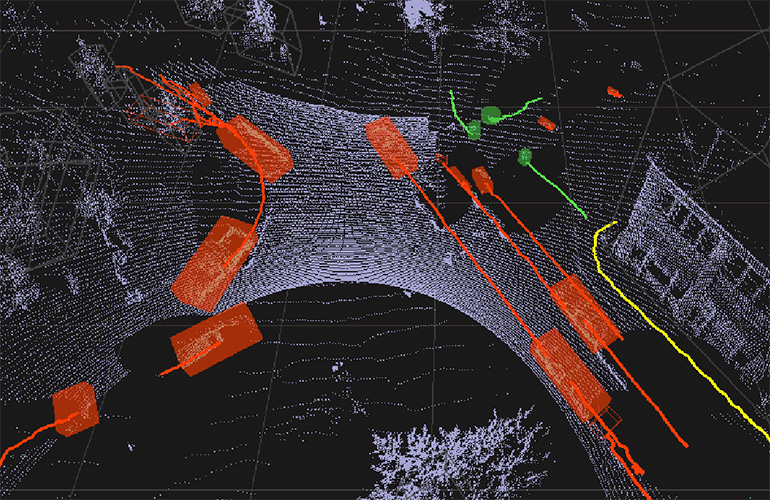|
Listen to this article  |

SENSR software can measure vehicle and pedestrian flow through urban areas. | Credit: Seoul Robotics
Seoul Robotics just launched an infrastructure-based version of its patented SENSR 3D perception software. The new SENSR-I software processes data captured by stationary 3D sensors in large spaces to provide high-resolution environmental insight. The solution is an extension of the SENSR software used for autonomous vehicle and autonomous mobile robot (AMR) vehicles.
The “I” in SENSR-I is for “infrastructure”. SENSR-I has been adopted by a breadth of industries including retail, security, intelligent transportation systems, smart cities, smart factories, airports and venue management. For example, SENSR-I enables retailers such as E-Mart to analyze consumer behavior, powers automated fleet management at a BMW facility and ensures spatial security for mines in Peru.
Applications include enabling organizations to better understand operational efficiencies, safety enhancements, crowd management and customer experience improvements. The company is leveraging algorithms developed with the core SENSR solution in this application for static infrastructure in both indoor and outdoor environments.
SENSR-I includes weather-filtering capabilities, and brings a new level of accuracy in all conditions, including heavy snow and rain. The company has always been sensor agnostic, able to leverage data from any number of LiDAR and 3D cameras. This enables users to integrate the appropriate sensor based on the application, cost and resolution requirements.
2D cameras have historically raised privacy concerns, and are prone to false positives and blindspots. In many applications, a 3D camera is more robust and able to accurately track object movement with non-biometric data. The SENSR software has robust sensor fusion capabilities, enabling it to quickly combine and filter data from multiple sensors.
“Until now, 2D cameras have been the only accessible, affordable solution, but that is no longer the case. Indisputably, 3D systems enable organizations to get deeper, more actionable data,” said Jerone Floor, Vice President of Products and Solutions at Seoul Robotics. “SENSR-I changes the game with its ability to simultaneously track the precise movements of people, vehicles and bicycles over expansive areas – unlocking unprecedented insights that can transform operations in ways never before possible.”
SENSR-I collects non-biometric data on more than 500 people and objects simultaneously. The anodyne design allows the software to be deployed in densely populated settings that often face scrutiny over the collection of sensitive personal data.
Korea Testing Laboratory (KTL), Korea’s only public comprehensive testing and certification organization, recently conducted a third-party analysis of Seoul Robotics’ SENSR software. The analysis was conducted on behalf of the Korean Government, which invested $12M in Seoul Robotics last year as part of a global scale-up program for Korean startups with a high potential for growth. KTL’s findings confirmed that SENSR detects objects within an error of 4 cm, exceeding the performance milestones required for the grant and making it the most accurate LiDAR image analysis technology on the market.
SENSR-I supports central processing to edge computing and everything in between, and is completely sensor and hardware agnostic. Seoul Robotics is the only company able to mix and match multiple sensor brands and computers simultaneously. This seamless integration approach provides the utmost in flexibility, and reduces complexity along with implementation and operational costs.
Credit: Source link


Comments are closed.